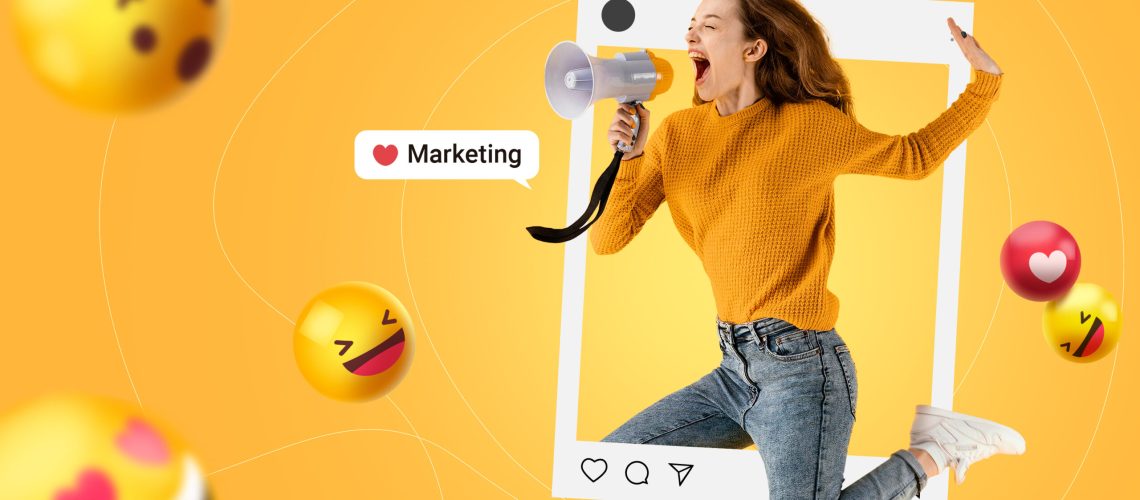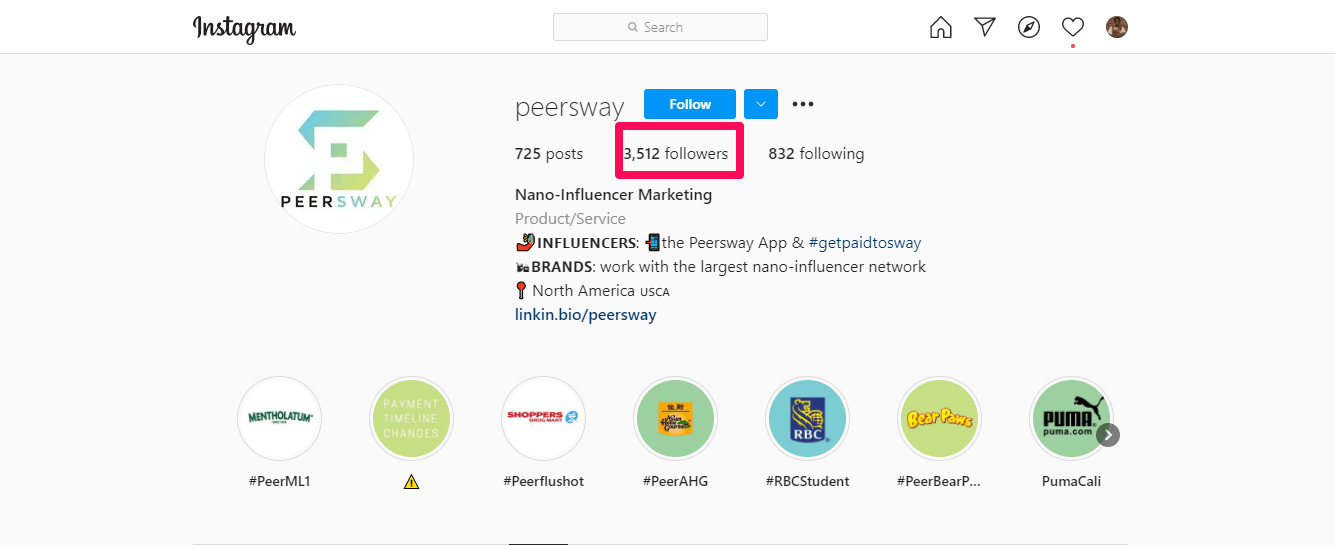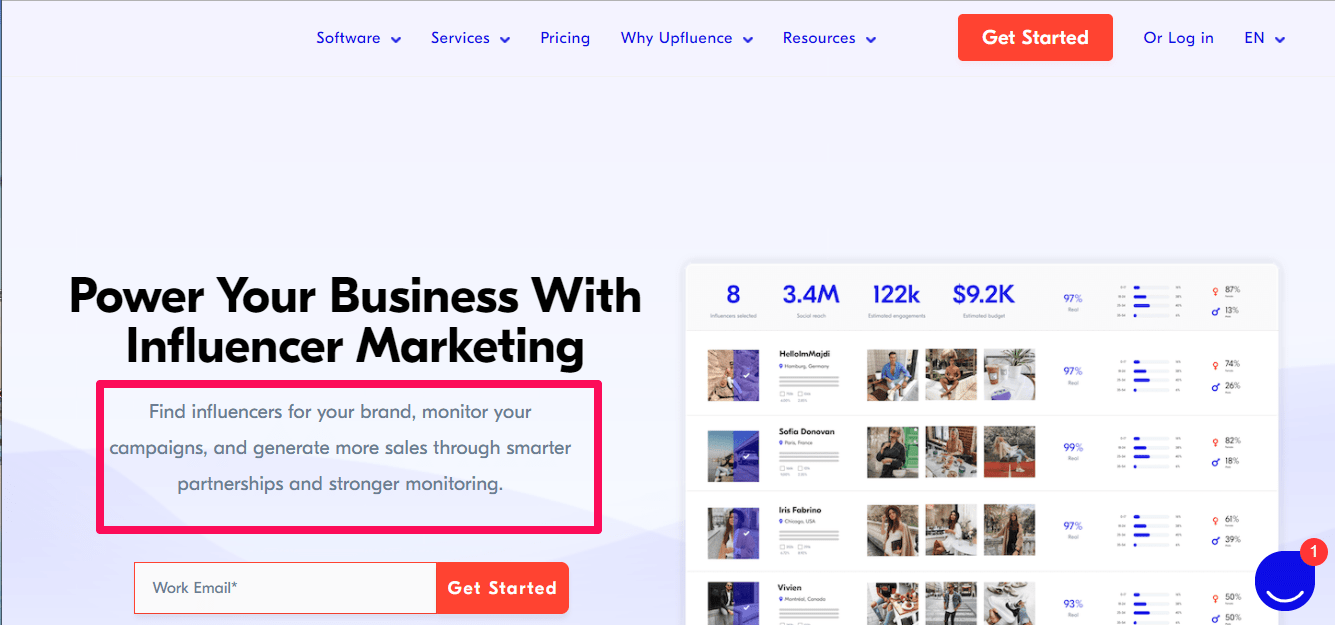Traditional marketing methods are no longer sufficient in capturing people’s attention. And this has brought in influencer marketing as a trending strategy for modern businesses who want to connect more and faster with a set of audience.
So, maybe you are a business owner, an entrepreneur, or an aspiring digital marketer who have often seen that word and doesn’t know what it entails or how to get started to promote a business with it. No more worries, you are at the right place for answers.
All you need to do is keep reading as we explore the topics below together:
- What is influencer marketing?
- Influencer marketing statistics you need to know
- Types of influencer marketing
- How to create an influencer marketing strategy
- What makes influencer marketing strategy successful?
- Influencer Marketing Platforms
- How many followers do you need to be an influencer?
What is Influencer marketing?
Influencer marketing is a type of marketing that uses influencers with a strong brand reputation for brand endorsement and promotion. It could be to market or promote your product/service or even to co-create contents with the sole purpose of increasing brand awareness and sales.
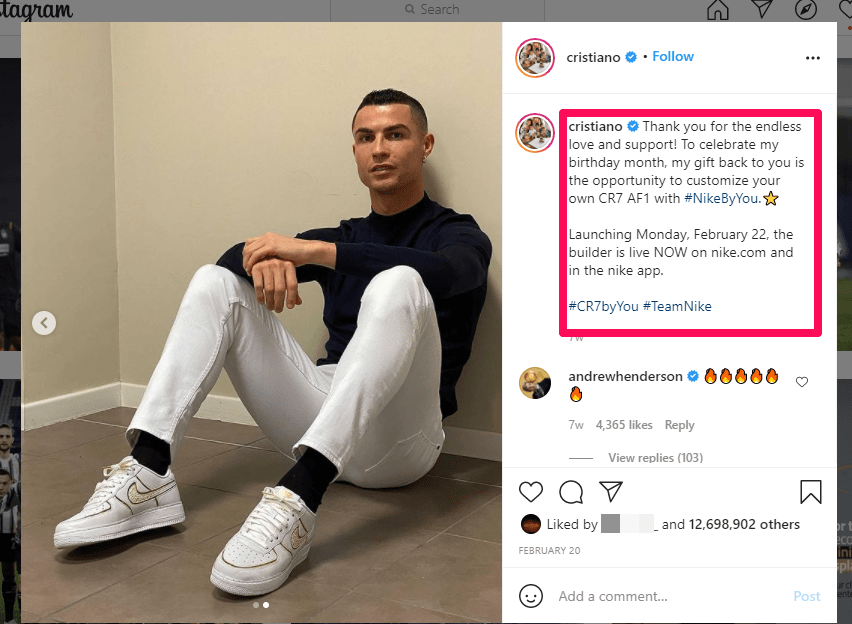
Source: Instagram
Prior to this time, marketing used to be easy, from the concepts and strategies you create to implementations of these strategies. But with the rapid growth in the industry, the competition has grown with more inventions of products.
Now, more ways for businesses to reach out to their target audience effectively are being sought out. This is where influencer marketing comes in.
Influencer marketing has been discovered to be one of the most effective ways to expand your reach either as a small or large scale business. With influencer marketing, you can increase your brand credibility and also establish yourself as an authority in your field of expertise.
According to bigcommerce, about 40% of people reported that they purchased a product online after seeing it used by an influencer on YouTube, Instagram, or Twitter.
Get 50% Discount to Master ALL Aspects of Digital Marketing That Can Earn You $2,500 - $5,000 a month (Even if you are a complete beginner!)
Our students that intentionally implement what they learn from our digital marketing course make back the entire course fee within a single month or more after completing our course because our course gives them many income generating options with unlimited earning potential with no age or location barrier. The best part is no technical skills are required.
An opportunity to change your lifestyle and make money working from anywhere in the world. The results our students get from our digital marketing course prove this could be applied to any market or country and that it is designed for any skill level and work background.
*By signing up, you agree to our privacy policy and terms of service.
And at the same time, 80% of marketers find influencer marketing to be an effective marketing strategy to make more sales and further grow businesses.
As you must have seen, influencer marketing is the “knight in shining armor” for businesses to leverage on.

An example of Influencer marketing, Source: Instagram
Are influencers helpful in brand publicity? Oh, yes!
An influencer is anybody who has the power to affect the purchasing decisions of other people because of their knowledge, authority, position, and even relationship with their audience.
Here are some specific influencer marketing goals that you should focus on as a brand. They include brand awareness, sales and lead generation, traffic, and brand engagement.
These goals should guide whatever decision you want to make concerning influencer marketing or at least they should serve as a basis for your decisions.
Influencer marketing statistics you need to know
- A significant portion of marketers, approximately 93%, have utilized influencer marketing in their campaigns.
- The primary objective for the majority, around 86%, of marketers using influencer marketing is to raise brand awareness.
- Trust in influencer recommendations is relatively high, with 61% of consumers expressing confidence in them.
- Instagram proves to be a powerful platform for influencer marketing, with approximately 87% of users taking action after seeing a product there.
- Instagram is the platform of choice for about half a million influencers.
- Influencer marketing on Instagram is considered one of the most critical aspects of the marketing strategy.
- Eight out of ten consumers made purchases based on influencer recommendations.
- Influencer marketing has shown a remarkable 11x return on investment compared to traditional banner ads.
- Around 60% of people believe that influencer-generated content performs better than branded posts.
- Influencer marketing is credited with helping 51% of businesses acquire better customers.
- Nano-influencers, with an engagement rate of 5%, exhibit the highest level of audience engagement.
- Businesses on average generate $5.20 for every $1 spent on influencer marketing.
- The influencer marketing industry has experienced significant growth, becoming a $13.8 billion industry.
- About 44% of B2C brands had plans to increase their influencer marketing budget.
- Globally, around 84% of Instagram influencers are women.
- Google searches for “influencer marketing” witnessed a 400% increase in the UK from 2016 to 2023.
- Businesses are making $5.20 for every $1 they spend on influencer marketing. (Influencer Marketing Hub)
Types of influencer marketing?
- Nano influencers
- Micro-influencers
- Macro influencers
- Mega influencers
1. Nano influencers
They are the set of people who have 500-5000 followers on social media. Their profiles are not polished, and their photos are not posed or retouched with many filters.
Most are just a regular person with stronger connections and they maintain close relationships with their audience.
They have the likelihood to answer every comment, and their answers are always meaningful to any question asked and this helps them to understand their followers better.
2. Micro-influencers
These influencers usually have between 2000- 50,000 followers on social media platforms. They have a lower follower count in a specific niche and they also have an intently engaged audience.
Unlike celebrity influencers, micro-influencers are able to engage and interact with their audience more frequently through likes and follows and also provide quick responses to questions and comments.
A higher level of interaction between the influencer and the audience means that a connection can be established quickly and there is a higher chance that the influencer is more relatable than a celebrity.
3. Macro influencers
This type of influencer has between 50,000 to 500,000 or even a million followers. They often find success from YouTube or Reality TV, although sometimes, their audience may not actually be interested in the products they offer.
They create and produce content regularly for their audience as some of them have taken the social media platforms to be their place of work so they get to manage them like a real business.
Their strength and size stand them out and also defines them, as they are able to reach a larger number of followers. Their posts reach far more people than those of micro and nano influencers.
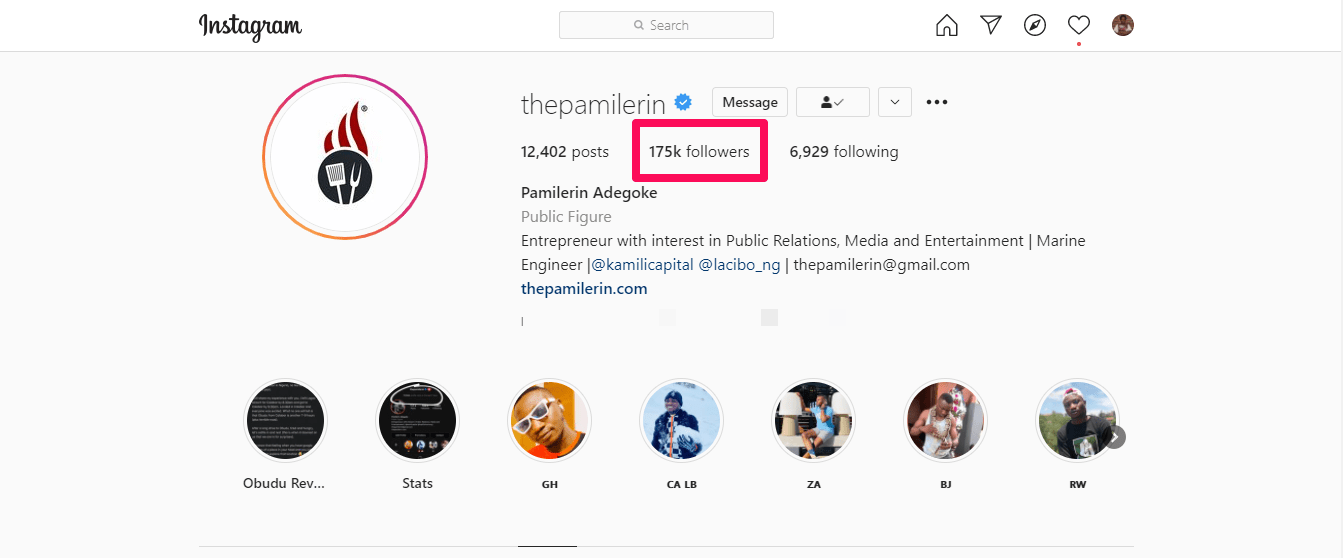
An example of a nano influencer on Instagram. Source: Instagram
4. Mega influencers
The set of people that falls under this category have more than a million followers on their social media channels. These are famous celebrities in real life, mostly known for their talent rather than for just being a mega influencer.
You will always find them with a source of income and this source of income is what brings fame and also positions them to become mega influencers. They can be singers, actors, sports athletes, etc.
And they are best suited for mega-brands who can afford them.
The same way we have different types of influencers is the same way we have different types of influencer marketing campaigns. All you have to do is to pick the one that suits your marketing goal and implement it.
Types of influencer marketing campaigns
- Product placement
- Unboxing
- Sponsored content
- Brand ambassadors
- Giveaway
- Events
- Affiliate marketing
If you remember, at the beginning of this article, we promised to share with you the definition and types of influencer marketing, which we’ve done already.
Now, let’s move on to how to create an influencer marketing strategy that can grow your business.
Influencer Marketing Platforms
Here are some platforms that can help you to implement your influencer marketing strategy and also achieve your goals:
1. Upfluence
Upfluence uses a large database with about 500 million items of content that are spread across Facebook, Instagram, Twitter, YouTube, Pinterest, and others.
This software provides business owners the opportunity to search through their databases to find and identify influencers that match their specifications.
You can find influencers who are suitable for your need and also affordable for your budget. It also allows you to manage relationships with influencers.
Source: Upfluence
We have others like:
2. Creator.co
3. Impact.com
4. Influencity
5. Klear
6. Tapinfluence
7. Influence.co
8. CreatorIQ
How to create an influencer marketing strategy
1. Establish your goals for influencer marketing
As much as influencer marketing seems like an easy to achieve task, it doesn’t rule out the fact that you should have a goal you intend to achieve from subscribing to it.
There are three big goals around influencer marketing and they are:
- Build brand awareness
- Facilitate lead generation
- Attract a new target audience.
Being able to clearly state out your goals will help you to identify the type of influencers you should work with to achieve that goal. However, your influencer marketing goals should not contradict your marketing goals as a business.
It is your already established goals that also determine the kind of message you should pass across to your audience through the influencer.
2. Identify your target audience
Who do you want to reach with these influencers? Who is your target audience? These are the next questions you need to ask yourself after setting out your goals. A target audience is a group of people whom your business has decided to aim at and direct its marketing efforts at.
Identifying your target audience determines if your influencer marketing will succeed or fail. And this is why you cannot ignore identifying them before choosing your influencer.
Identifying them also helps to know which platforms will help you to reach them and if your influencer marketing will either be in the form of digital marketing or traditional marketing.
3. Identify the influencers you want to work with
You have a large number of influencers around you on the internet, but not all can be fit to represent your brand or help you achieve your goals. After you have identified your goals and your target audience, the next step is to identify who you need for the job.
Although some influencers have a specific niche, and if your business is outside their niche, they may not be able to give you your desired result.
But remember we talked about the different types of influencers that exist, right? Aside from identifying them by niche, identify them base on size as well.
Ask yourself some critical questions like, “Can your business afford to pay mega influencers or you can only afford nano influencers?” Even if you can afford it, do you have structures in place for the audience a mega influencer will bring to your business?
You don’t want to put in all the efforts only not to achieve your goals due to inadequate preparation to accommodate more audience.
So, ensure to identify your goals and the tools that will help to achieve them goal. Not only that, put structures in place to ensure that your goals are successful.
4. Pick a platform
After identifying your goals and the type of influencer you want to use for your business, then you need to select a platform. Instagram seems to be the one platform that looks like an influencer platform, but there are several others like Facebook, Twitter, Tiktok, and YouTube and you could also use offline platforms.
For offline, you could decide to do a street show and get a celebrity to promote your business or publish banners in strategic public places from a planned shoot with your brand for endorsement.
Depending on your goals and choice of influencers, make sure to select a platform that fits your brand and budget. But the good thing is, majority of the social media platforms can be used. And that’s because digital marketing has proven to be the fastest means through which you can reach your target audience. About 50.64% of the world population of 7.82 billion uses social media regardless of their age or internet access.
So, you see, digital marketing gives you access to a large target audience if you can harness its tools to reach your audience and get them to patronize you.
In our 90% practical digital marketing course, we teach what you need to know to grow your business with digital marketing or up your game in your career as an aspiring digital marketer.
5. Convert existing and loyal customers to brand ambassadors
Another strategy you can use for your influencer marketing is to convert your existing and loyal customers to brand ambassadors. A brand ambassador is a person who is the face of a brand and also acts as the tastemaker in that brand community.
They help to market that particular brand and advertise the products and services the brand offers.
This person also has to represent that company at specific events to either perform product demonstrations or giveaway sample products. And it doesn’t necessarily mean that the person has to be an employee of the company, the person can still have their personal jobs and act as brand ambassador for your brand.
One of the ways you can achieve this is to give out customized items to your existing and loyal customers to appreciate them and also get them to talk about your brand online and offline.
For instance, if you send a customized shirt to a loyal customer and he/she wears it out, it can influence the purchasing decision of people who get to see it on him/her.
Your customer that has the shirt just influenced another potential buyer unknowingly.
Your branded items could vary according to your budget but that is another strategy you can use to get what you want with influencer marketing.
6. Setup your budget
Now that you already decided the influencer you want to use to promote your business, and what you want to achieve, set up your budget and make sure it aligns with the goals you want to achieve.
Ask questions like, “How much do I want to spend? What do I want to spend it on? What will I achieve with this specified amount that I intend to use?”
You also get to determine the type of influencers you want to use with an already laid out budget, you don’t want to get a macro influencer when your budget can only cover a nano influencer.
7. Reach out to influencers
Having crossed your ‘t’s and dotted your ‘i’s, you can now reach out to your influencers and get the party started. For your brand influencers to work successfully, you should create the kind of campaign you want them to run for your business as well as the kind of content you want them to promote.
You also have to monitor your influencers to ensure that they run the campaigns as at when they should. Influencers have a couple of brands they work with, so, they might lag behind if you don’t monitor and manage them effectively.
Tips for Working with Social Media Influencers
- Establish a strong connection with influencers, fostering open communication and mutual respect.
- Clearly define expectations and goals for both parties to ensure a smooth collaboration.
- Allow influencers to showcase their unique style and creativity, resulting in more authentic and engaging content.
- Communicate your objectives and what you expect from the influencer, setting realistic expectations for both parties.
- Keep your word and fulfil any promises made to the influencer, building trust and maintaining a positive working relationship
Limitations of Influencer Marketing
Influencer marketing, while a powerful strategy, comes with its own set of limitations that brands should be aware of:
1. Wrong Influencers Can Harm Your Brand
Collaborating with influencers who are not the right fit for your brand can potentially damage your reputation rather than enhance it, emphasizing the importance of careful selection.
2. Investment and Effort Required
Finding the ideal influencers and managing campaigns effectively demands a significant investment of time and resources from brands, making it a challenging endeavour.
3. Difficulty in Tracking Results
Some perceive influencer marketing as complex to set up and challenging to track results accurately, highlighting a potential limitation in measuring the impact of these campaigns.
Frequently asked question
How do you create an influencer marketing strategy?
- Identify your marketing goals and outline them.
- Research on the type of influencers that can help you achieve your goals.
- Identify the influencer you need to promote your brand.
- Nurture relationships with your influencers before making the request.
- Cultivate the habit of patience as most success doesn’t happen overnight.
What makes influencer marketing successful?
Successful influencer marketing relies on the ability of the brands to target the right audience and demographics. An influencer might carry out his/her duty and and yet the brand may not achieve the goal because of a wrong target audience.
To be successful at anything, you have to make sure you put in the right and quality efforts. The same applies to influencer marketing, if you can put in the required efforts, you will record success.
How many followers do you need to be an influencer?
You need an average or a large number of followers to become an influencer depending on the type of influencer that you want to become. But an average of 3000-millions with respect to the various types of influencers.
We have different types of influencers ranging from nano to mega influencers. What you intend to achieve as an influencer determines the number of followers you need to have.
Conclusion
Having discussed what you need to know and what to implement as a business that wants to grow with influencer marketing, you can be sure to be successful by practising those strategies.
However, in our 90% practical digital marketing course, we teach our students practical ways to grow their business with influencer marketing, and other aspects of digital marketing that are relevant and important for business growth. Click here to get started.
More relevant articles you need to read
Social Media Influencer Marketing Explained: What It Is And How To Make Money From It
Twitter Marketing Guide | Getting Started With Twitter, Strategies & Tips For Business
Inbound marketing Strategy – 17 Effective Inbound Marketing Strategies For Fast Growth
How To Get Customers Online | 15 Ways To Find More Clients For Your Business
How To Use WhatsApp For Business Promotion | WhatsApp Marketing Strategy

